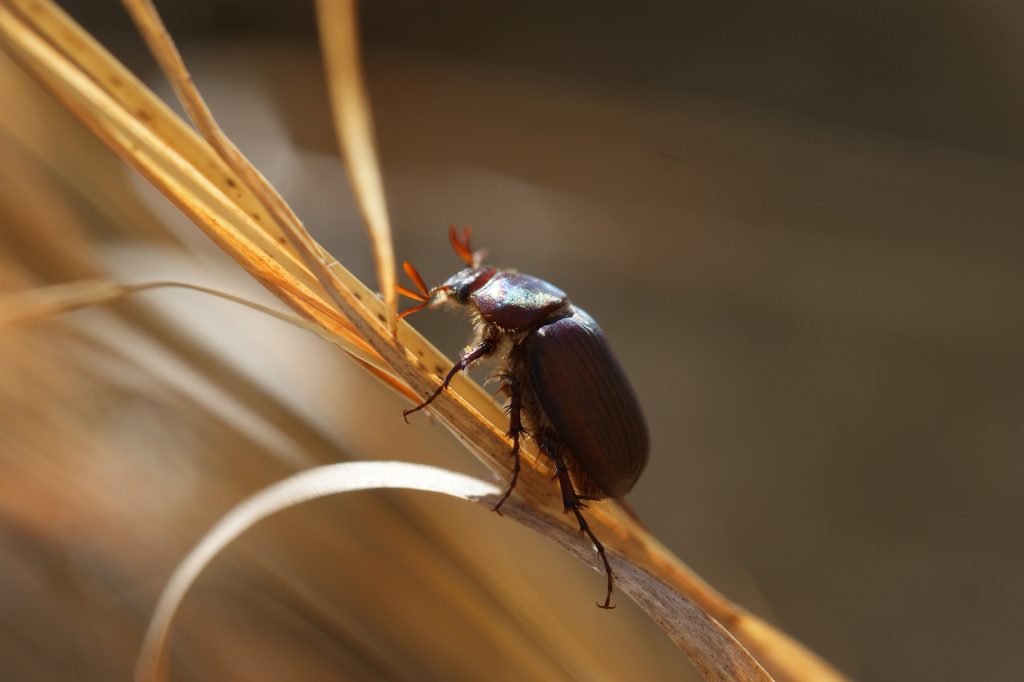May is synonymous with bumblebees. Or it was about four decades ago, when they would suddenly appear flying with the first rains of the year, hitting windows, light bulbs and walls, pets, absent-minded gentlemen and children. The bumblebees then confirmed that several months of rain awaited us, they were a spectacle of unpredictable nature, which could end up in the coffee cup or in the soup bowl, and an imminent danger for the poultry. That is why the small bumblebees were known by a nickname that was also a warning: the drowning bees.
The bumblebee is a sign of dangers and wanderings, of mysterious movements and small accidents. Or it was, in that remote time. “Bumblebee-ing” meant to speak in whispers, low, and also to lurk around the group of people who “bumblebee-ing”, with the purpose of guessing their secret intentions. And of course, for decades, we Costa Ricans have used the word abejón to refer to various types of beetles and not, as grammar and common sense would dictate, to a bee of exceptional size.
The bumblebee is thus both a misnomer and a metaphor for equivocation. It is said that a person who stumbles frequently as a result of drunkenness “walks like a May bumblebee”, although this popular expression is beginning to lose meaning for the younger generations, and not precisely for lack of drunks. Why are bumblebees disappearing? Are other insect populations declining as well? How does this situation affect us? Does it affect us?
Facts, Fictions and Resurrections
In the early 1970s, Costa Rica’s Central Valley abounded in green areas, coffee plantations, and flower and vegetable crops. This landscape has given way to urbanization and roads, which is considered to be the main cause of the dramatic decline of bumblebee populations, estimated at about 95% over the last 40 years. This means the loss of some of their benefits, such as pollination of plants and decomposition of organic matter, which in turn allows the soil to absorb nutrients at a faster rate.
Biologists and entomologists interested in May bumblebees say that of the 430 species that have been identified in our country, only one fifth are capable of living in spaces modified by humans. Thus, the exchange of large green areas for landscapes of cement, stone and rebar is considered the main cause of the decline in bumblebee populations. In addition, the excessive use of pesticides and the effects of global warming have contributed to this phenomenon.
In ancient Egypt, the beetle became a symbol of resurrection, thanks to its ability to bury itself and emerge from the earth every day, among other talents. The protagonist of The Metamorphosis (1915), Gregory Samsa, woke up one bad day, after a restless sleep, turned into a giant beetle. Our beloved May beetle, like other endangered species, is gradually moving away from our daily life and popular expressions and is approaching, dramatically and almost exclusively, the territories of mythology and literary fiction.
Extinctions
There are one million described insect species and about six million to be named. This description is just the beginning of it all. It is a taxonomic procedure of great importance which, however, does not assume that we know, much less appreciate, insects. To prove it, it is enough to consider that the insect species that are attractive or beneficial to us, such as bees or butterflies, can be counted on the fingers of our hands.
Insects make up three-quarters of the terrestrial animal kingdom, which means that there are about 200 million insects for every person on the planet. Thus, insects are as numerous as they are unknown, as fundamental to life as they are awkwardly persecuted. According to a study published in 2019 by the University of Sydney, the populations of 41% of the Earth’s insects are in decline. In a slightly more alarming line, the researchers in charge of that publication claim that these animals could disappear in the next 100 years.
Factors behind the decline in insect populations in various parts of the world include, as with May bumblebees, habitat changes caused by humans and the use of chemicals such as herbicides, fungicides and pesticides. Reversing this trend involves a change in the way we cultivate soils and, above all, in the way we coexist with insects.
Living together means, in this case, rethinking the use of certain insecticides and understanding what our small daily insecticides mean in relation to this fundamental link in the chain of life. Insects provide food for birds, fish and small vertebrates, which in turn feed other animals. In addition, all species of flowers need their collaboration to pollinate, which accounts for about 70% of the fruits and vegetables we eat daily.
“Without insects there is no food and without food there are no people”, entomologist Dino Martins commented in 2019 to National Geographic Magazine. It’s that simple. This is a more important issue than we usually consider and “more serious than a bumblebee at a chicken dance”, as we used to say in the remote era when bumblebees appeared by the thousands, crashing into everything and everyone, with the arrival of the May downpours.

